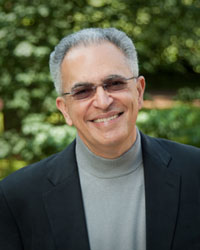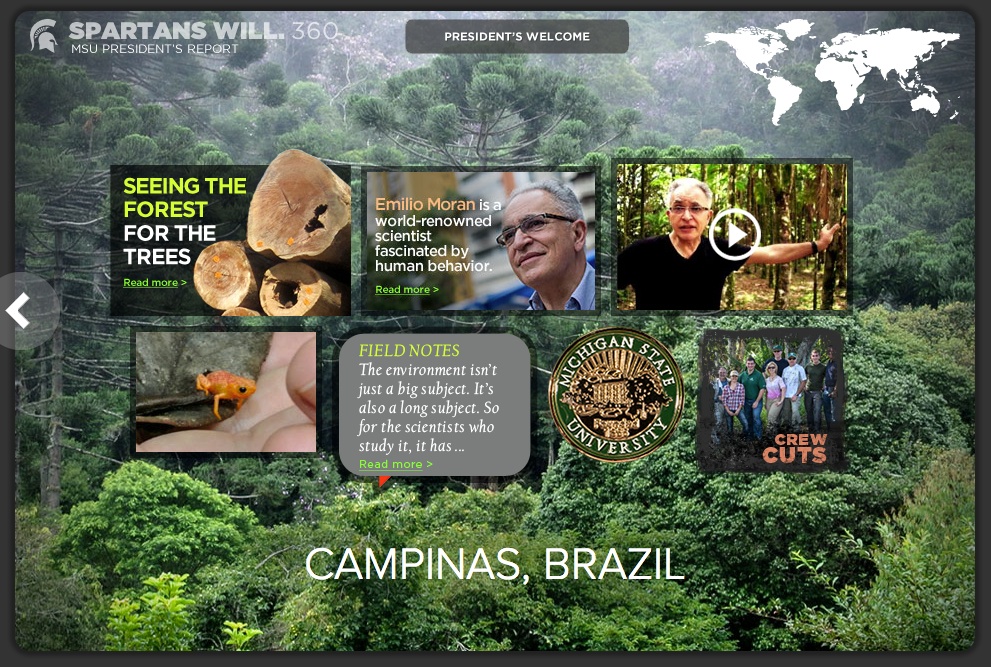Book shows evolution that joins human and environmental sciences
Add Summary

Hot-button issues such as climate change, wildlife conservation and restoring decimated rainforests are renowned scientific playgrounds.
The biological/ecological scientists for years have been in the front row – agronomists, biologists, hydrologist, climatologists, ecologists have weighed in with heavy equipment and heavy data from GPS and satellite imaging.
Emilio Moran, co-editor of a new book “Human-Environmental Interactions,” makes the case that people --
their motivations and indeed, how they feel – are indispensable data when it comes to saving the planet and addressing environmental problems.
“For many years people have tended to work separately across many different interests,” Moran said. “Today they all agree we need to work together and integrate the mechanisms and methods of social and natural sciences in order to address environmental problems.”
Moran, Visiting Hannah Professor of geography at Michigan State University, is a world-renowned social scientist who has made his academic mark by resolutely marching into other disciplines. Trained as a social anthropologist, he has worked for 30 years in the Brazilian Amazon, exploring the humid tropic’s potential for intensive agriculture – a question that has led him academically into soils, agricultural production, deforestation, reforestation and how humans make decisions.
scientist who has made his academic mark by resolutely marching into other disciplines. Trained as a social anthropologist, he has worked for 30 years in the Brazilian Amazon, exploring the humid tropic’s potential for intensive agriculture – a question that has led him academically into soils, agricultural production, deforestation, reforestation and how humans make decisions.
Now Moran is a member of the National Academy of Sciences and what then was an academic incongruity today has become cutting edge contemporary scientific pursuit valued by many scientists. The book, which he co-edited with Eduardo Brondizio of Indiana University, joins junior and senior scientists to explore what role humans play in addressing health challenges, managing forests and animal species across the world, and how they make good and bad decisions of environmental significance.
A decade ago, science began taking apart the earth’s components -- oceans, terrestrial ecosystems, atmosphere, hydrological systems -- and studying each one and how they connected to, and influenced, the other parts of the Earth’s systems.
That opened doors to major advances, such as improved climate prediction. It also highlighted the impact humans were having on these systems.
Burning fossil fuels are changing the atmosphere. Fishing fleets have depleted the stock of many species. Agricultural activities have led to massive deforestation. Eco-tourism, such as that generated by nature reserves in China that protect giant pandas, can lead to degradation of the very habitat meant to be protected.
“It’s now time to bring all these scientific findings, and scientists, together to find out not just how people have created environmental problems but how they are solving these problems,” Moran said.
Moran is mentoring a third generation of scientists. Mixing social and natural sciences, in his youth an oddity at best – at worst heresy to some -- is becoming not only an acceptable path to a PhD, but a future direction of training students to solve complex environmental problems.
In his recent appointment at MSU, he is aligning with centers dedicated to a holistic approach to environmental studies. In the Center for Systems Integration and Sustainability, he will work with Jianguo “Jack” Liu, a human-environment scientist and sustainability scholar who has turned international attention to such discoveries as how divorce (with its resulting increase in the number of households) can hurt the environment, and how ecotourism, if not properly managed, can harm habitat.He also is using his years of work in Brazil to help reveal which land is better returned to forest, and which areas should remain in food or wood production based on their long-term value for either.
And always at the core is understanding people. He’s now talked to generations of those who make their living off the Amazonian land. Some have succeeded and many have failed, and he said he has been amazed by the stories of courage.
“No environmental science is truly complete until we understand, and have data on, how the people live, how their lives are changing what moves them to make choices, and then how to figure out, together, how to integrate that understanding with the findings from the natural sciences. It is from this intersection that we can find the possibility of change in business as usual.”



 Print
Print Email
Email





